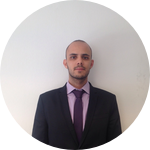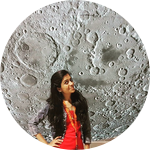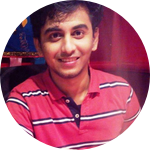About This Project
Extreme environments (i.e. radiation & natural disasters) are the biggest challenges for humans in recent times. We are developing an economical and energy efficient method to design sustainable habitat that will protect us from such harsh environments. We will design a novel 3D printing technique that will process raw materials and develop various structures. At the same time we will adapt this technology for astronauts for living on Mars & Moon, protecting them against space weather events.
Ask the Scientists
Join The DiscussionWhat is the context of this research?
How can Astronauts live safely from radiation and storms on Mars and on the Moon? The purpose of this research is to maximize the use of local raw material to 3D print inhabitable, affordable, feasible, and least, comfortable homes that can save them. And by maximizing the use of local soil, we can minimize the business costs.
On Earth, this technology will save people living in dangerous zones, where natural disasters such as floods and hurricanes have become common challenges. Wherever harsh environment, this innovative manufacturing process is the solution.
Phase 1: Develop 3D printed habitable shelter for humans to protect from harsh environments.
Phase 2: to understand how these shelters will be adapted for space environments such as those on the surface of Moon and Mars.
What is the significance of this project?
An inexpensive technique is highly demanding for a rapid building process. The data generated from preliminary research will be useful to develop scientific knowledge on improvising quality of 3D printed structures.
A comparative analysis will be performed with various 3D printed objects. It will allow us to understand the material behavior under various atmospheric conditions for building infrastructures and heat-shield to protect human from radiation and natural disasters. Our material composition and mixing technique will be able to 3D print homes with concrete, Martian and Lunar soil without consuming much energy or power.
This will leverage the project’s capacity to meet the high demand for affordable and reliable 3d printing safety homes in outer space and on Earth.
What are the goals of the project?
The main objectives are,
i) Synthesis and processing of raw materials.
ii) Develop better compositions and apply 3D printing technique to design structures.
iii) Analysis and measurements of properties of the 3D printed structures.
The goal is to process raw materials to optimize and develop mixture with proper composition that will be used for 3D printing. The binding strength will be decided by maintaining a certain weight ratio of raw materials. Prepared mixture will be extruded through a mechanism to design 3D structures.The next stage is to place the designed 3D printed parts inside a furnace to obtain dense product. The final stage is to analyze and measure the properties (i.e. density, mechanical strength, rigidity, toughness) of the 3D printed sintered solid objects.
Budget
At present, the design of this experiment is in progress. 3D printer electronics have been tested. The donations will allow purchasing raw materials, tubes & various size nozzles (0.5-1.2 mm), necessary hardware & tools that are required to finalize the experiment. The budget $2000 will help to fully develop a customized 3D printer and an extrusion system that will allow to print bigger size 3D printed objects.
A certain amount of funds will be used for analysis of properties (i.e. microstructure, density, strength & rigidity measurements) of 3D printed solid samples. The fund will also be used for traveling to Mars Desert Research Station to present the work on an international platform to get a global recognition. All donors will be acknowledged for their contribution through social media and presentations. Any donors from Loughborough area are welcome to visit in person to check the progress and discuss about this experiment.
Endorsed by
 Project Timeline
Project Timeline
The electronic control system of the 3D printer is tested on an open source platform. Some trial prints with different type of fluids are performed by syringe and various size nozzles. Hardware design and customization of 3D printer is in progress. All contributions will help fully develop an operational 3D printer with a special extrusion system. A certain amount of fund will also be used for traveling to MDRS to demonstrate this project for further recognition on international platform.
Nov 16, 2017
Project Launched
Dec 05, 2017
Characterization of raw materials.
Dec 10, 2017
Customize a 3D printer and design the extrusion system.
Dec 30, 2017
Demonstrate the project at the Mars Desert Research Station during an Analogue Astronaut training session (Crew 185)
Jan 20, 2018
Sinter the printed samples, perform characterization and analysis of properties of the 3D printed solid parts.
Meet the Team
Avishek Ghosh
I have always believed, If we can build better technology to survive on Moon or Mars, we can use such technologies to protect life on earth. I realized the values and importance of conservation of life on earth and wish to actively participate in transforming life, not just by the thoughts but by actions like, promoting space education and creating awareness in our society. In my assessment, Space is another frontier to explore and develop technology to survive under extreme environments which will also be beneficial to humankind.
I witnessed the benefits of interdisciplinary and intercultural exchange while traveling to different countries during my career. I realized the importance of Space for humankind. I believe, we have still not reached to the people who are not aware of the importance of Space technology and its advantages in our day to day life.
My interest has always been to contribute for future space exploration and develop advanced technology through scientific research and implementing idea with an interdisciplinary approach. The areas of my overall research goals are always to tackle and execute scientific and technical assessment of a particular idea or concept.
Currently I am pursuing PhD on Additive Manufacturing of Metamaterial Structures (SYMETA) at the Loughborough University, UK. After graduating in Physics, I decided to further pursue Masters in Space Studies (MSS) at International Space University (ISU), France. During my masters, I had opportunity to work as a research scholar at NASA Ames Research Center. The main objective of my research is to focus on application strategies and understand the Additive Manufacturing (AM) capabilities of utilizing in-situ resources for lunar architecture developments. Beside the professional attributes, I am also involved in various outreach activities and volunteering for STEM education.
Project Backers
- 11Backers
- 30%Funded
- $594Total Donations
- $54.00Average Donation



